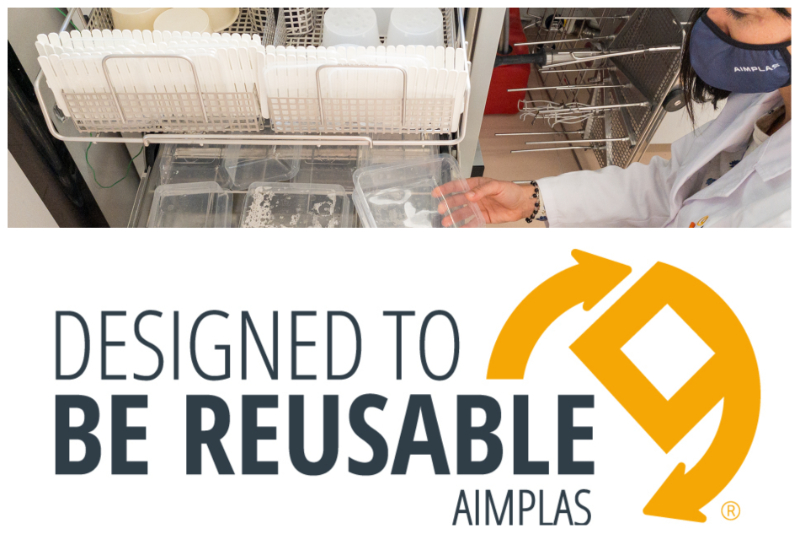AIMPLAS creates trademark to certify safety and functionality of reusable food packaging

The trademark certifies that a product is designed to be safely reused after several washings. Image: AIMPLAS
The Plastics Technology Centre has created its own trademark to certify that reusable food packaging is safe and retains its properties after repeated washings.
Plastic packaging is subject to increasing regulations aimed at promoting the circular economy of plastics, including many different European, national and regional regulations to promote reusable packaging. The challenge is even greater in the case of food packaging due to the difficulty of guaranteeing the safety of reusable packaging after repeated use and washings.
AIMPLAS, the Plastics Technology Centre, has over 30 years of experience in the food packaging sector and its laboratories offer the widest range of accredited tests in the plastics industry.
The Centre has created the Designed to be Reusable trademark based on Regulation (EC) 1935/2004, Commission Regulation (EU) No 10/2011, Regulation (EC) No 282/2008, as well as recently issued dishwasher resistance standard UNE 53928:2020. This trademark certifies that a product is designed to be safely reused after several washings and that it has passed the tests required for a product to be considered reusable in terms of food safety. The trademark also validates the product’s functionality.
The tests a product must pass before being awarded the trademark include different analyses, such as a dishwasher resistance testing for at least five dishwasher cycles, a non-intentionally added substances (NIAS) risk assessment, as well as migration tests to guarantee migration to food does not present a risk to human health. Sensory tests are also carried out to ensure that reuse of packaging does not modify food’s organoleptic characteristics.
Packaging manufacturing companies that have been awarded the trademark have a competitive edge in terms of transparency and food safety.
For consumers who use the packaging, the trademark is a certificate of product safety and sustainability. Promoting reuse provides many advantages for the environment, including a clear reduction in the amount of waste (which might have been poorly managed), the use of fewer resources and a drop in greenhouse gas emissions.
